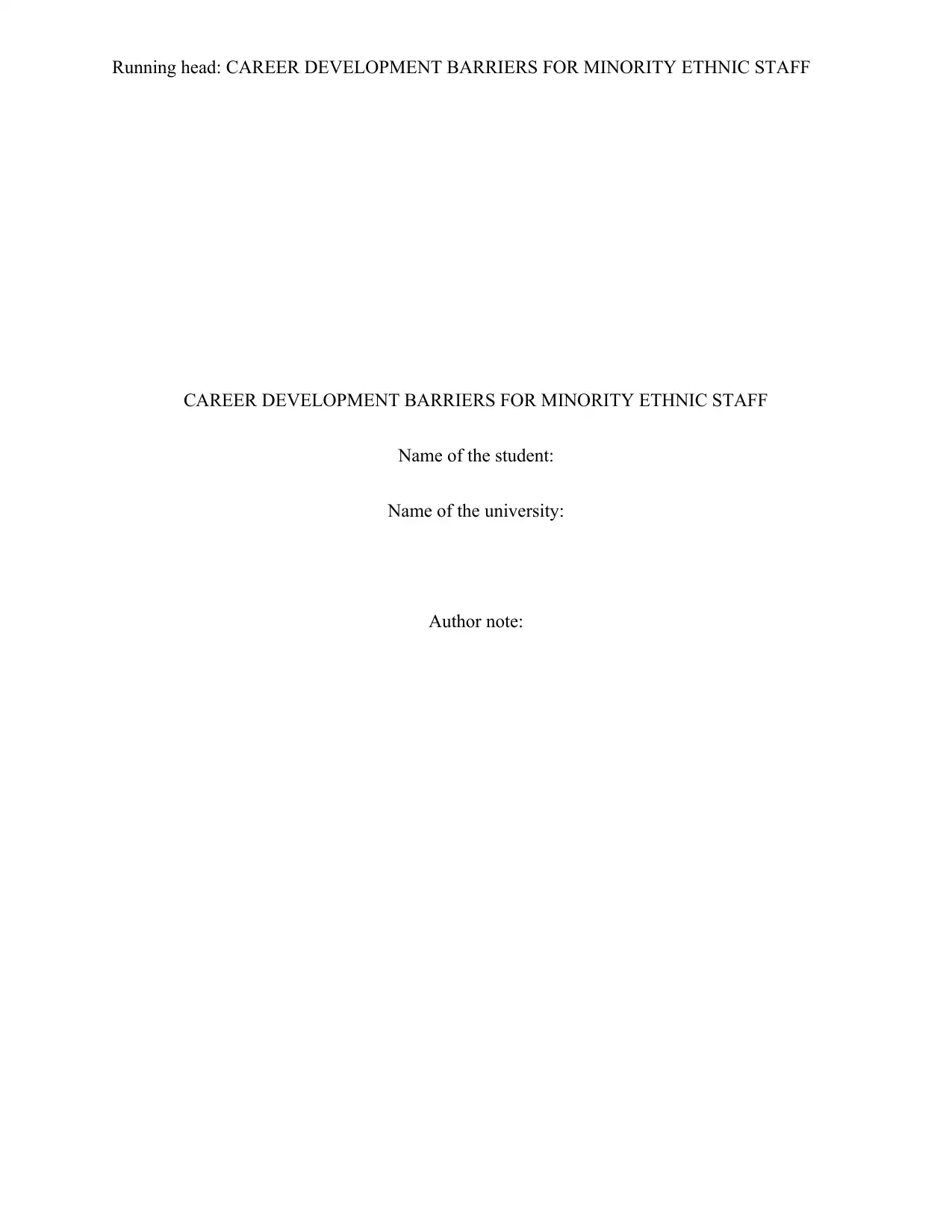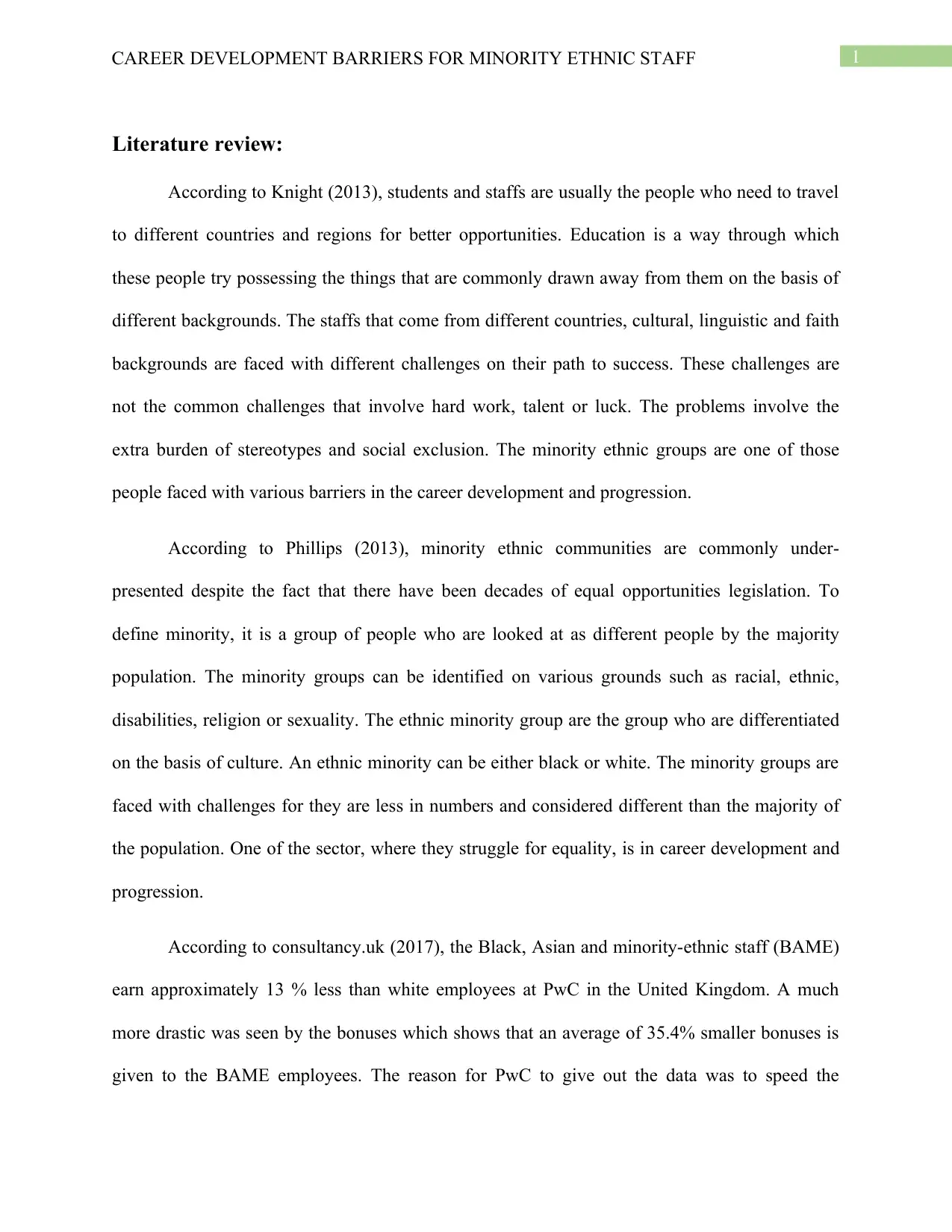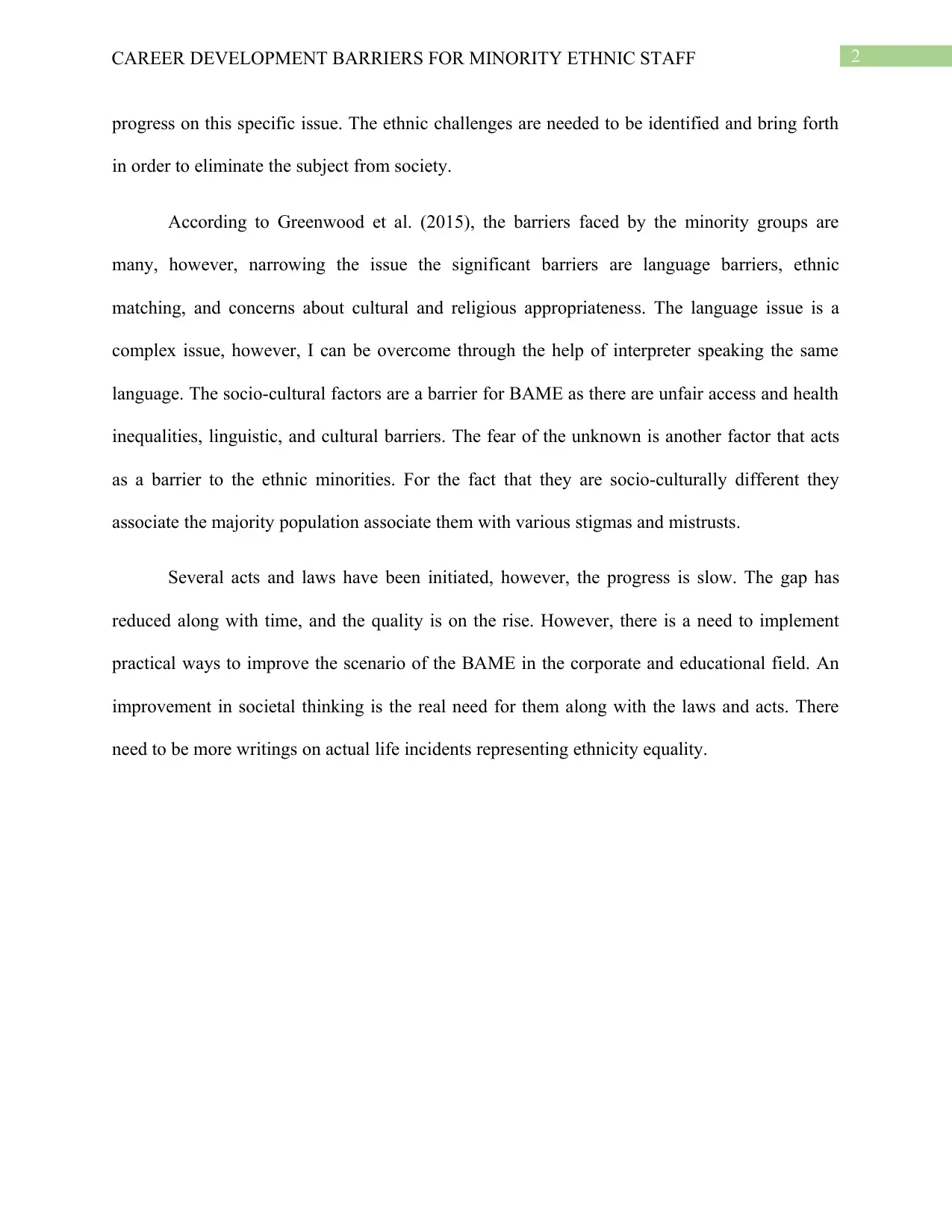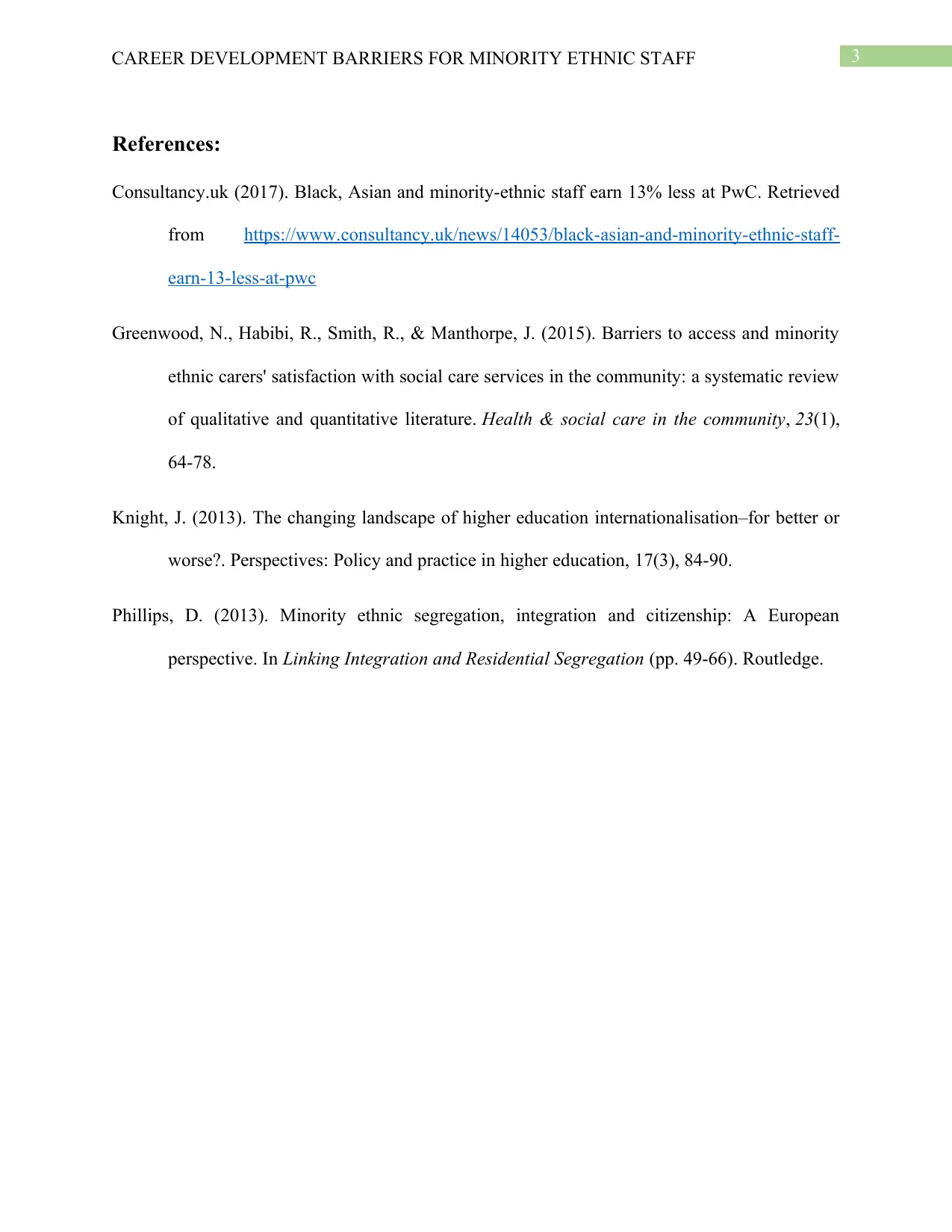Career Development Barriers Faced by Minority Ethnic Staff: Review
VerifiedAdded on 2023/06/03
|4
|789
|236
Literature Review
AI Summary
This literature review explores the career development barriers faced by minority ethnic staff. It highlights challenges such as language barriers, ethnic matching issues, and socio-cultural factors, as well as concerns about cultural and religious appropriateness. The review references key studies and reports, including data from PwC, to illustrate the disparities and underrepresentation of minority ethnic groups in career progression. It emphasizes the need for practical solutions, societal improvements, and increased representation of ethnicity equality in literature to address these barriers and promote equal opportunities. The review acknowledges the slow progress despite existing legislation and calls for more effective strategies to improve the situation for Black, Asian, and minority-ethnic staff in both corporate and educational fields.
1 out of 4










![[object Object]](/_next/static/media/star-bottom.7253800d.svg)